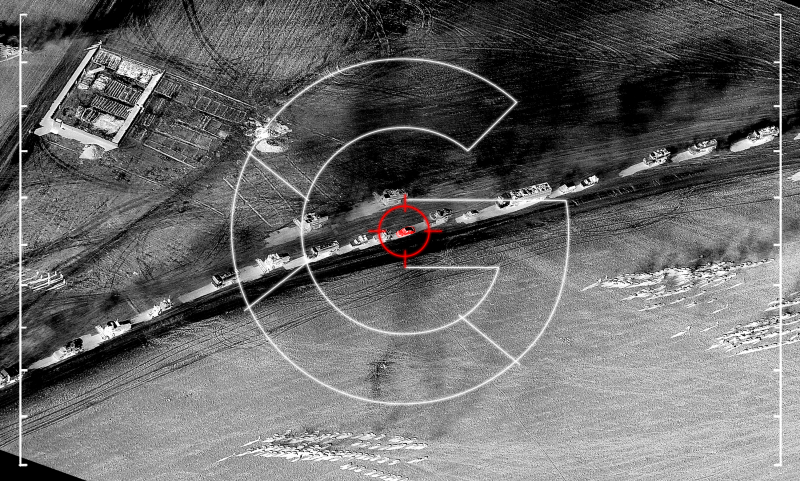Why Google dropped the Pentagon’s Maven project

We publish an excerpt from "Intelligence hyper-loop – how the consideration of the" human-in-the-loop "concept is vital for the digital revolution of espionage" by Fabio Vanorio and Francesco D'Arrigo for the Italian Institute of Studies Strategic "Niccolò Machiavelli"
The concept of Human-In-The-Loop can hinder the diffusion of the technology within the “National Security Enterprise” in the presence of limitations to the availability of data.
In the current configuration of the Intelligence Community, the hierarchy governs access to data. Generally, access to sensitive data is limited, particularly HUMINT and SIGINT. Given the high cost (human and technical) of their treatment, analysts often cannot access them due to threats of compromise. This happens even more with the politicization of intelligence when it is politics that favors careers. Limited access to sensitive data frustrates analyst communities and renders AI useless.
Like any raw material, data must be collected, refined and made available for analysis. The data is renewable, self-generating and virtually limitless. By 2025, the global data sphere will exceed 175 zettabytes compared to 33 zettabytes in 2018 (Reinsel, Gantz, Rydning, 2018). By 2020, the Internet of Things (IoT) will consist of more than 50 billion connected devices, producing and consuming data silently and relentlessly (Davis 2018). In recent years, Intelligence analytics has become increasingly challenging due to an unprecedented increase in the volume and speed of both raw and structured data (mainly text, audio and video data, which accounts for 95% of all Big Data in circulation, Gandomi, Haider 2015), collected through classified and open-source platforms. Querying structured Big Data is relatively simple. Unstructured data, on the other hand, is in its raw state and still to be processed and interpreted, but – for these reasons – also very valuable. Examples are social media, emails, blogs and multimedia content (Sivarajah, Kamal, Irani, Weerakkody, 2017). The abnormal volume of information, still to be processed before becoming “actionable Intelligence”, is overloading the cognitive abilities of every single analyst and every team. From 1995 to 2016, the amount of reading required of an average American intelligence analyst dedicated to a low-priority country increased from 20,000 to 200,000 words per day. The forecast for 2025 is about ten times the volume of digital data than today (Regens 2019).
Once the data has been contextualized and transformed into information potentially relevant to intelligence, human cognition becomes vital to its interpretation. In fact, the human abstraction capacity retains a considerable advantage over the machine. To remember an image, a text, a number, a human being needs to see it a number of times considerably less than that of a machine (Turing 1950).
The power of technology can be effectively used to increase human performance in the Intelligence Loop by "feeding" human skills (cognitive and physical) with the contribution that machines can provide, moving forward the "frontier of production possibilities" of Community Intelligence and increasing the volume of data that humans can process without reducing their ability to concentrate, learn and identify the key elements embedded in those data streams.
“OUTSOURCING” OF THE VITAL FUNCTIONS OF THE INTELLIGENCE CYCLE
The Human-In-The-Loop concept can hinder the diffusion of technology within the National Security Enterprise in the presence of “outsourcing” of the technological tasks of the Intelligence Loop.
Ethical reasons could induce contractors, not belonging to the “National Security Enterprise” (conditioned by non-disclosure agreements, but emotionally disinterested in the intrinsic concept of protecting national security), to refuse to develop technologies for war theaters.
The partnership between Google and the US Department of Defense on the “Project Maven” provides a case study. In April 2017, the Pentagon established the "Algorithmic Warfare Cross-Functional Team" (AWCFT) known as "Project Maven", to integrate Machine Learning and Big Data at the military operational level (Work 2017).
Google has collaborated on the "Project Maven", applying its Artificial Intelligence solutions to the activity of unmanned aerial vehicles (UAVs) both in the targeting of drones (Fang 2018) and in the analysis of the shots taken (Conger, Cameron 2018).
To help analysts examine objects in images, Google has provided the Pentagon with its "TensorFlow", an open-source API (Application Programming Interface, Pettey 2017) used in Google's Machine Learning applications to recognize objects on data ( Conger, Cameron 2018). The first goal of the partnership was to develop the ability to automatically detect around 38 classes of objects regularly present in military drone footage.
In April 2018, some 3,100 Google employees signed a letter urging then CEO Pichai Sundararajan to leave the “Project Maven”. Despite the assurances provided by Google's management that it limited itself to making available open-source software for object recognition (usable by any Google Cloud client) to help US military aviation lighten the workload of its analysts , on the internal push Google had to abandon the project in early 2019.
This is a machine translation from Italian language of a post published on Start Magazine at the URL https://www.startmag.it/innovazione/perche-google-fu-costretta-ad-abbandonare-il-progetto-maven-del-pentagono/ on Sun, 03 Jan 2021 06:29:49 +0000.
